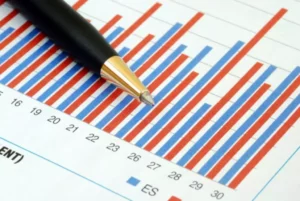Content

The articles and research support materials available on this site are educational and are not intended to be investment or tax advice. All such information is provided solely for convenience purposes only and all users thereof should be guided accordingly. An asset is anything owned by an entity that has economic value and can be converted into cash. Assets are different from liabilities and equity, which is important to understand for both personal finances and business accounting.
They may also be referred to as property, plant and equipment and recorded like that on a balance sheet. One method to measure how efficiently a company utilizes its fixed asset base is the fixed asset turnover ratio, which measures the efficiency at which a company can generate revenue using its PP&E. Additionally, fixed assets https://www.bookstime.com/ are used by financial experts to determine the value or profits of a company. Financial experts need to determine whether a company is profitable, and fixed assets are one aspect that can help them decide. These experts collect the assets’ information and their depreciation rate and establish their reports using them.
Learn How NetSuite Can Streamline Your Business
Yet, as assets lose value as time progresses, companies also report the depreciation and amortization expenses. Regardless of their physical form, the assets of a company must be accurately valued so that investors and financial analysts can properly assess the intrinsic value of the company. Intangible assets are resources belonging to a company that have no physical form. Tangible assets are resources belonging to a company that do have a physical form; these include current assets and fixed assets. Cost can be represented by the loss of value between the purchase and the sale price. Fixed assets are the items owned by a company that makes it possible to operate the business, such as tools, equipment, and furniture.
- Assets have several important properties that make them valuable to businesses.
- The value of these types of assets is reported at the end of each tax year according to specific calculation rates since they can’t be easily converted into cash.
- The correct location of the assets is important for state income tax and local property tax reporting.
- The majority of fixed assets are purchased outright, but entities sometimes borrow funds to purchase fixed assets or pay to use a piece of property or equipment over a period of time.
- Consequently, significant accounting efficiencies are created since standard costs usually only slightly differ from actual costs.
- They also define it as something which exceeds a company’s minimum capitalization limit.
Fixed assets are long-term tangible assets that a company uses to generate income. However, in times of financial difficulty, PP&E can be used as collateral for a business loan. PP&E depreciates over the course of its lifespan, with the exception of land, which is expected to appreciate and should be reported at its most up-to-date market value.
Examples of fixed asset
Its non-current assets would be the oven used to bake bread, motor vehicles used to transport deliveries, and cash registers used to handle cash payments. While these non-current assets have value, they are not directly sold to consumers and cannot be easily converted to cash. Current assets are expected to be converted into cash or consumed within one year. Examples of current assets include cash, accounts receivable, and inventory.
Fixed assets are often large and illiquid physical assets important to a company’s core business operations. That means that the company will hold them longer than one year or one operating cycle. Therefore, a company will not use up the assets or convert them into cash within one year or one operating cycle. Furthermore, fixed assets are tangible; they are physical property, like real estate, buildings, and equipment.
Examples of Fixed Assets
Resources with value but without physical substance fall into this category. Harold Averkamp (CPA, MBA) has worked as a university accounting instructor, accountant, and consultant for more than 25 years. He is the https://www.bookstime.com/articles/fixed-asset-accounting sole author of all the materials on AccountingCoach.com. To know more about such accounting concepts, visit the Akounto blog. For example, a manufacturing company purchases a machine on Dec. 1, 2019 for $56,000.
What is the definition of a fixed asset IFRS?
The International Financial Reporting Standards (IFRS) defines a fixed asset as: “a resource controlled by the enterprise as a result of past events and from which future economic benefits are expected to flow to the enterprise.”